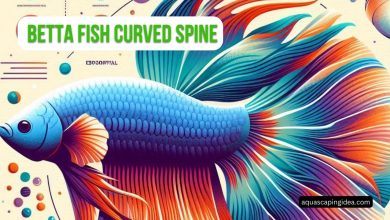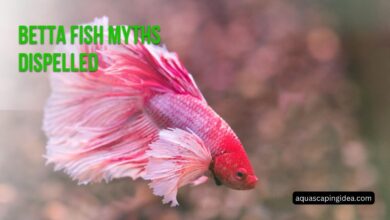What Are Some Good Algae Eaters For Bettas?

While inevitable, the right algae elimination squad keeps unsightly blooms under control. Certain snails, shrimps and other creatures work wonders balancing ecosystems through cleanup duties. Best of all, they peacefully integrate with territorial bettas when carefully introduced.
Ideally, compatible algae eating crews blend into the background, diligently addressing excess growth without disrupting daily betta life. Avoid overstocking by selecting just a few efficient workers for balance. Combine pieces of the puzzle below for tailor-made teams that keep tanks pristine without stressing prized fish.
Best Algae Grazing Crews for Betta Tanks
As vibrant bettas cruise through their domains, unsightly green tinges can creep across glass and plant leaves. Luckily, select efficient algae eaters peacefully cohabitate with these spectacular fish, clearing spaces without compromising flowing fins and trails. Read on for the top species to let loose on nuisance algae invading beloved betta tanks.
Suitable Algae Eaters for Betta Tanks
When considering cleanup crew members, prioritize safety and efficiency. These characteristics allow algae grazers to work quickly without attacking slow moving bettas or getting attacked themselves. Here are top contenders for spotless betta ecosystems:
Nerite Snails
These popular little workers boast rounded shells that prevent fin tears if a curious betta investigates. Adapted for both alkaline and softer water, Nerites steadily munch film and thread algae from hardscape and leaves without ravaging healthy plants. Their size stays modest compared to giants like Apple Snails also prone to reproducing prolifically. Avoid overstocking by keeping just 1-2 Nerites for efficient assistance.
Amano & Ghost Shrimp
Both ghost and Amano shrimp blend safely into planted backdrops, clearing all types of algae with their little fans and mouthpieces. Their sheer speed also helps them avoid confrontation with less active bettas. However, very large betta males occasionally hunt shrimp as tasty snacks. So use dwarf shrimp species and limit individuals to 6 or less with aggressive fish. Adding lots of hiding spots and line of sight breaks allows everyone to thrive.
Siamese Algae Eaters True Siamese Algae
Eaters remain one of the most efficient tank cleaners that peacefully coexist with bettas. But they are often confused with Flying Fox fish sold under the same name that become aggressive. True SAE feature a solid black stripe running the full body length. Imposters have disjointed markings. True SAE only reach 6 inches maximum, allowing them to help considerably before needing rehoming.
Benefits of Adding Algae Eaters
Help Control Algae Growth
One of the primary benefits of adding algae eaters is to help control and reduce nuisance algae growth in the aquarium. Algae can quickly take over tank glass, decorations, and plants if left unchecked. Algae eaters like snails and shrimp will continuously graze on algae, helping to prevent excessive buildup. This improves the overall appearance of the tank.
Supplement Betta’s Diet
Many algae eaters will also consume uneaten betta fish food, helping to clean up excess nutrients in the water that could otherwise fuel algae blooms. Bettas are carnivores and may not consume all their food, so algae crew members help clean up leftovers. Their grazing also provides them with an herbivorous complement to the betta’s meaty diet.
Add Movement and Interest
In addition to their utility, algae eaters like shrimp add interesting movement and activity to the aquarium. Bettas are often admired for their bright colors and bubble nesting, but can be relatively sedentary. Algae crew members like shrimp and snails provide constant cruising motion that many fish enthusiasts find visually appealing and engaging to watch.
Introduction and Feeding of Algae Eaters
Drip Acclimation
When first adding algae eaters like snails or shrimp to an established betta tank, it’s important to properly acclimate them to avoid shock. This is typically done through the drip acclimation method. Their bag water is slowly mixed with water from the betta tank over 1-2 hours allowing them to adjust to the new water conditions. A sudden change can be stressful and harmful.
Supplemental Feeding
While algae eaters will graze on algae and leftover fish foods, it’s still recommended to provide some supplemental feeding. Sinking algae wafers, blanched vegetables like zucchini or cucumber, or bottom feeder tablets help ensure they get adequate nutrition. Be careful not to overfeed as uneaten food will rot.
Potential Risks
It’s important to research algae eater species compatibility with bettas. Some larger or more aggressive algae eaters may harass, nip at fins, or outcompete a betta for food resources. Peckish snail species may feed on live plants. There’s also a risk of population explosion if snails or shrimp breed uncontrolled. Algae eaters should be an intentional addition.
Alternatives to Live Algae Eaters
Algae Wafers/Tabs
If you don’t want to add living creatures to control algae, algae wafers and tabs are an option. These are plant-based discs or blocks that slowly dissolve and release nutrients that help limit algae growth. They work by reducing excess nutrients like nitrates and phosphates that algae needs to proliferate. However, they don’t physically remove existing algae.
Increased Water Changes
Performing more frequent partial water changes is another way to reduce algae without live algae eaters. Algae is caused by an imbalance of lights, nutrients, and carbon dioxide. Removing and replacing some tank water regularly helps reset those levels by diluting excess nutrients. A gravel vacuum can also mechanically remove algae during water changes.
Aquarium Cleaners
There are cleaner products made specifically for dealing with different algae types in aquariums. Algae scrub pads/brushes physically remove algae buildup on glass and decorations through scrubbing. Chemical algaecides treat green water algae blooms, though these need to be used carefully with any livestock. UV sterilizers can help in some cases as well by disrupting algae’s reproduction cycle.
FAQs
What snails can live with betta fish?
Hardy algae eating Nerite snails work well, especially the Zebra variation. Avoid Apple snails that grow too large and proliferate. Limit Nerites to 1-2 to prevent bioload spikes.
What shrimp get along with bettas?
Small varieties like Ghost, Amano and Cherry tolerate bettas best. Give them ample hiding spots among plants and rocks. Large males may prey on exposed shrimp, hence the need for sightline breaks.
How many bottom feeders should I add to my betta tank?
Start with conservative numbers like 1-2 plecos or catfish then monitor conditions before slowly increasing cleaner crews. Overstocking stresses bettas and spikes bioloads.
Do betta fish eat algae?
No, Siamese fighting fish do not consume common green or black beard algae. Let them focus on quality pellet and freeze dried diets while efficient cleaners like shrimp and snails clear excess growth.
Conclusion
While no aquatic environment completely prevents algae, recruiting select grazers like snails, shrimp and small fish creates a balanced ecosystem perfect for showcasing bettas. Limit added numbers to prevent overstocking while maximizing hideouts. Soon these unseen heroes will keep glass pristine without interfering with bubble nests and flashy fins sailing above. Give them clean canvases to endlessly paint against and enjoy your bettas thriving for years on end.




